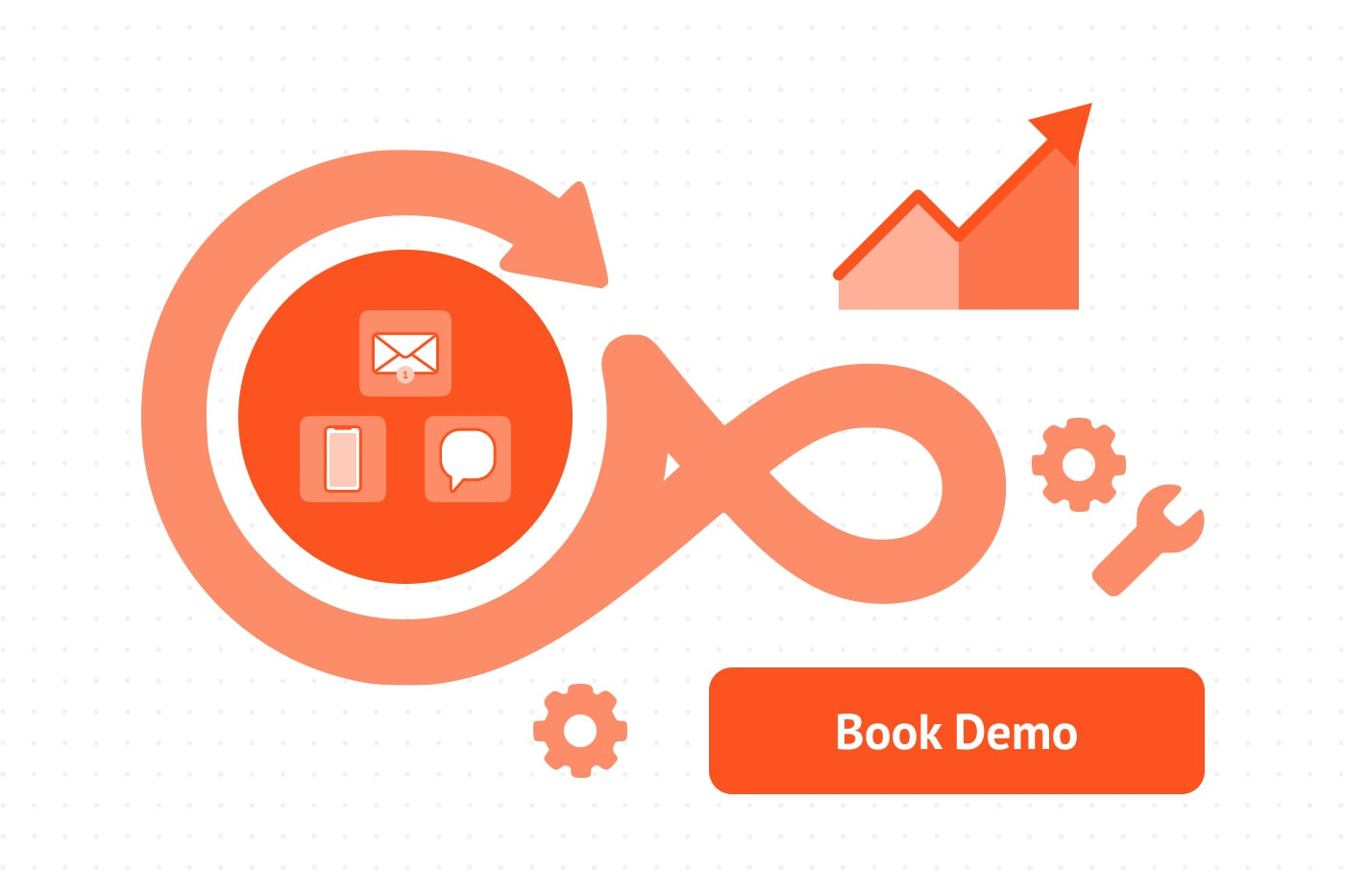
Alex Anikienko
Expert Writer
October 26, 2025

Alex Anikienko
Expert Writer
October 26, 2025

When your communication strategy combines various channels, good timing, and tailored content, the performance math adds up quickly. Brands using three or more channels in a campaign see a 287% higher purchase rate than single-channel efforts. Segmented emails receive 101% more clicks, and send-time optimization delivers an additional 23% increase in click-to-open rates and 57% in unique clicks.
As you can guess, the main point isn’t “send more,” but rather “coordinate better.” Monolithic campaigns using a single ruleset to decide who, when, where, and what can’t keep up with today’s volume and variability. Switching to a multi-agent messaging system is a wiser move because it improves communication performance and streamlines routine operations.
In this article, we explore practical architectures you can deploy right away to create a system that systematically turns triggers into conversions, and conversions into revenue. All without burning out your audience, exhausting the team, or breaking the bank.

When your strategy includes integrating in-product and out-of-product channels, the likelihood of a purchase increases by 3.1 times.
Imagine a cluster of several focused AI “teammates” that share the workload. One selects the target audience (segmentation), one picks the right moment to send the message (timing), one selects the channel (push, in-app, or email), and one generates the message (creating on-brand copy variants). A lightweight orchestrator coordinates these “teammates,” enforces guardrails (consent, frequency, and tone), and learns from each notification sent.
Think of a multi-agent messaging system as replacing one overworked generalist with a crew of pros, each excellent at making a specific decision, so that campaigns remain coordinated without becoming spammy.
A user completes two workouts. → The segmentation agent flags a user “trial-likely.” → The channel agent plans a push notification for the next session and an email for later. → The timing agent schedules the high-engagement window. → The copy agent sends the best-performing message variant. → The orchestrator logs the outcomes, so the next campaign can start smarter.

When to use: Your team shifts from rules-based campaigns to AI assistance to quickly achieve wins without changing the platform.
What’s inside:
How it runs: Trigger fires. → Eligible users are segmented. → The best send-time per user is determined. → AI generates and tests several on-brand variants. → The Orchestrator delivers notifications and improves the next campaign based on the results.
Implementation in Reteno: Dynamic segments, send-time optimization, and “One from Many” testing solution.
Success signal: Steady increase in opens and CTR, as well as fewer “Why did I get this?” complaints.
When to use: You have a high volume of events (content, fitness, fintech) and need to improve per-user engagement in real time.
What’s inside:
How it runs: Events update profiles. → The segmentation agent predicts intent. → The goal agent sets the objective (trial, reorder, or upgrade) → The channel agent picks the fastest viable communication path. → The timing agent schedules campaigns per user. → The copy agent personalizes micro-messages.
Implementation in Reteno: Coordinate push, in-app, email, set fallbacks and delays, keep a rolling testing schedule.
Success signal: More same-day sessions and a measurable conversion boost from channel arbitration, not just more sends.
When to use: You operate in regulated categories or strict tone guidelines and want to ensure scale and safety.
What’s inside:
How it runs: Copy variants are generated and tested. → The brand voice agent reviews them automatically. → The orchestrator agent blocks any message that violates consent, frequency, or tone. → Always-on A/B testing promotes the best-performing notifications.
Implementation in Reteno: Consent-aware segments, frequency policies, and non-stop A/B testing for true lift.
Success signal: Higher conversion rates with stable unsubscribes and clean audit trails.
A multi-agent setup provides greater autonomy to your marketing team. Humans set the goals, strategy, voice, and constraints. In turn, the AI-powered agents perform the granular work at the user level. Over time, your orchestrator accumulates advantages: each test refines the reasoning process, and each new message has a better chance of converting.
To improve the communication strategy, you don’t have to “boil the ocean.” Begin with the Starter, prove lift, and then expand to the Mesh and Enterprise patterns where needed. A prerequisite is a platform that natively coordinates messaging channels, supports experimentation, and integrates well with your data. Reteno focuses precisely on this: consent-aware audience segmentation, synchronized user engagement through in-app, push, email, and continuous notification variant testing.
If you’re operating with a single, monolithic campaign brain, you’re competing with teams that have a squad of specialists for every send. Multi-agent messaging systems transform routine tasks into collaborative strengths, verified by continuous experiments.

Want to see how this maps to your app’s lifecycle? Select a Reteno plan or book a personalized demo, and we’ll walk you through a right-sized architecture, wire up a pilot, and quantify growth against your current baseline.
Alex Anikienko
|
July 2, 2025
Unlock 3× campaign ROI with the data-backed guide to full-funnel messaging automation
Alex Anikienko
|
October 21, 2025
Turn push & in-app notifications into revenue engines with generative AI personalization

